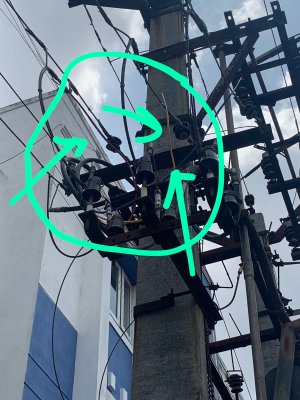As far as i know MX is made in india product. Chemical earthing is done using a galvanized electrode and chemical compound.
I had earlier tried to debug this humbug called chemical earthing over there. It is a commercial trick to cheat gullible and ignorant people.
Earth resistance is the resistance at the interface of the soil and the earth rod. (Refer IEEE 80).
Very effective earthing is achieved all over the world including India by simply driving the rod into the ground as @stefan wrote above.
The Indian standards go a step further to specify pipe earthing with coal and salt. Pipe cannot be driven into the ground, so you have to dig a pit and in order to restore the conductivity of the soil that has been disturbed, the charcoal and salt helps. The same applies to plate earthing. If you can compact the soil around the earth rod there's nothing like that. You drive out the air and add water when compacting to get back near the same conductivity. You need space to run the compacting machine. But installers do not do this.
These pipe earthing have a funnel on top to pour water and pipe is perforated to irrigate the soil periodically. Substations in dry areas have an irrigation system that the operators operate or they hose them occasionally to wet the earth pits to keep the resistance down.
This chemical earthing is simply a mixture of bentonite clay and some salts to keep the moisture. It is required only in dry areas where you bore a hole and fill with this mixture to make sure the bonding between the rock and earth rod is contiguous. The rod is then inserted into this "chemical". Even if you are able to drive the earth rod with a pneumatic hammer into the hard & dry soil, due to the vibration and voids in the soil, air that is a supergood insulator will enter the interface of earth rod and surrounding soil to form a high resistance earth pit. Hence, the use of "chemical earthing". In most places in India the proponents of this may be selling it just to steal your money.
They know you don't know the science behind it.
If you get a few days of rain once in a while, that will keep the conductivity of soil.
Even in Rayalaseema area (in Telugu it means a land of rocks as I under stand) where I built a 400kV substation we could achieve good low resistance with just soil backfill. Just to reinforce, it was a 400kV station not a 415V transformer. The amount of lightning surges, fault currents, Transient over voltages (TOVs), Switching over voltages, EMIs that can trip the system etc. are infinite compared to an audio system we deal here.
That galvanizing is only to reduce the corrosion not to reduce the earth resistance. Again fooling public.
 Thanks to @Kannan for lending me his isolation transformer to test which gave me the confidence to invest in an isolation transformer.
Thanks to @Kannan for lending me his isolation transformer to test which gave me the confidence to invest in an isolation transformer.




